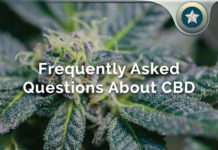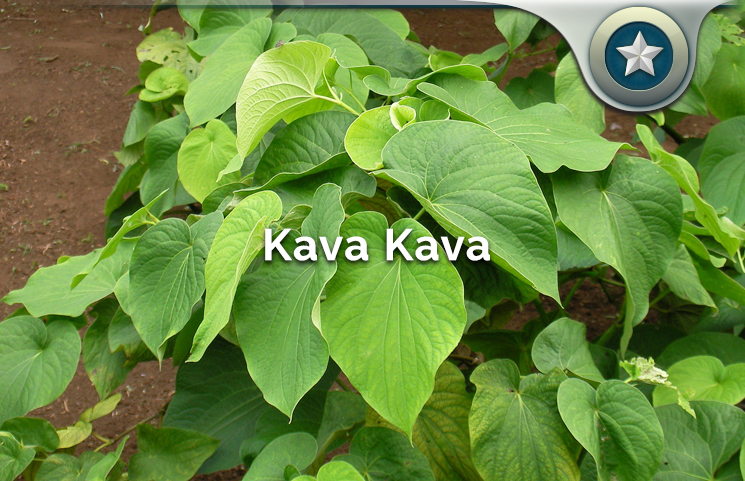There are many natural botanical solutions that are used extensively throughout the world to fight illnesses. Many traditional herbal and plant-based medicines have become popular in recent years due to modern scientific insights that back up their efficacy with hard data.
Some of these natural medicinal plants are touted for their ability to cure a wide range of diseases, or even destroy cancer cells. There are, however, significant drawbacks to many of these plants that should be taken into consideration.
Kava root is one such plant. Also known as Kava Kava or piper methysticum, this tropical plant grows in many locations throughout the South Pacific. Commonly consumed as a sedative, anesthetic, euphoriant, and natural herbal medicine in Polynesian cultures, Kava has been used in traditional medicinal systems for thousands of years.
Kava Kava has gathered attention internationally over the last few decades as interest in natural medicines has grown, but it has become a controversial topic as concerns have developed regarding the safety of its use.
The Kava Kava Controversy
One of the most interesting claims made of the medicinal efficacy of Kava root is its purported ability to function as a natural cancer treatment. Natural health supporters claim that Kava is able to both block tumor growth and offer chemopreventive properties.
A 1996 clinical trial performed by the Department of Medicinal Chemistry at the University of Minnesota determined that the active ingredients in Kava root are able to inhibit chemically-induced tumor growth in mice.
Despite this promising study and others like it, contrary evidence exists that points to Kava as a source of fatal liver disease. A 2012 study performed by three separate universities found that the traditional recreational formulations of Kava used in Polynesian cultures are associated with an increase in liver failure.
The conflicting sources of information on Kava and its potential health benefits can make it hard to determine whether you should take Kava root extract to enhance your health. In this article, we’ll provide a careful analysis of the benefits and risks of using this controversial plant as a health supplement, as well as exploring some potential alternatives.
Kava Kava Health Benefits
As a traditional medicinal herb, Kava root is used to treat a wide variety of illnesses and health complaints. Kava is commonly consumed to help reduce anxiety and stress, or as a sedative to help minimize insomnia.
Aqueous extracts of Kava are also used to treat the symptoms of ADHD, depression, epilepsy, and chronic fatigue syndrome. There is promising evidence to support the use of Kava root as a treatment for migraines and muscle pain.
Kava root is also claimed to offer a number of antibacterial properties, minimizing the effects of urinary tract infections, uterine swelling, respiratory tract infections, venereal disease, or menstrual discomfort.
The list of potential health benefits of this unique botanical extract even include a cure for the common cold or as a libido-enhancing aphrodisiac. Kava root has been used historically to treat skin diseases such as eczema, psoriasis and even leprosy.
The many traditional uses of Kava Kava as a folk medicine include application as a mouthwash for oral canker sores, to promote faster wound healing, dulling toothache pain and use as a generalized painkiller. Despite the long list of traditional uses for the Kava root, many governments around the world have issued warnings with regards to its use or banned it outright.
In the early 2000’s, Kava Kava was subjected to a blanket ban throughout Europe due to a series of liver toxicity reports. This ban was repealed in 2015 after a lengthy investigation into the safety concerns that surround the controversial natural cure, with German administrative courts citing a lack of clinical evidence conclusively demonstrating the danger of Kava Kava extracts.
The FDA does not currently prohibit the sale or consumption of Kava derived products, nor does it expressly endorse it. Kava is currently an unscheduled substance in the United States, meaning it is legal to sell, possess, or ingest, but the FDA has released a consumer advisory warning that warns consumers of the potential risk of liver damage presented by Kava root extract.
With these facts in mind, it’s important to remain aware of the potential benefits and risks of Kava root. Let’s take a look at the potential positive benefits of Kava:
1. Kava Root can Potentially Help Fight Cancer
Kava root extracts contain an interesting chemical compound that has shown promise as a potential cancer-fighting agent. Cancer researchers from around the world have been drawn to the potential chemoprotective properties of Kava root due to paradoxically low cancer rates in the South Pacific.
Research conducted by Dr. Xiaolin Zi, an associate professor of urology at UC Irvine, found that while South Pacific Islanders are some of the heaviest smokers in the world, they enjoy surprisingly low cancer rates.
The answer to this paradox may lie in a bioactive agent called flavokawain that is found in the Kava root. Study of the interactions between flavokawain and cancer cells have led to a surprising amount of evidence supporting its use as an anti-cancer medicine.
Flavokawain has been demonstrated to enhance antitumor immunity, function as an anti-metastatic agent, and deliver significant results in the treatment of breast cancer.
Flavokawain appears to induce a process called apoptosis, or cell death, in precancerous cells by inhibiting the carcinogenic effects of mutated p53 protein.
The p53 protein plays an important role in preventing the development of cancerous cells but is prone to mutation, which causes cancer growth. Research into the potential cancer-destroying ability of flavokawain and Kava root is ongoing, but is incredibly promising so far, with a large body of evidence in favor of its use.
2. Kava Root Appears to Reduce Prostate Tumor Size
Prostate cancer is the most common cause of cancer that affects men, with 1 in 8 men diagnosed with prostate cancer in their lifetime. Multiple studies have demonstrated the potential ability of kava root extract to reduce the size of prostate tumors.
A 2012 study performed by the UCI department of urology determined that flavokawain and kavalactones, another form of bioactive agent derived from Kava root, are able to reduce tumor growth in prostate cancer tissue that had been xenografted into mice.
Another study was also performed by the urology department of UCI in conjunction with various other medical institutions across the United States in 2015. This study demonstrated that Skp2, a specific protein that is critical to spontaneous tumor development, can be targeted by flavokawain to inhibit both cancer development and growth.
This process not only halts the development of cancerous lesions and prostate adenocarcinomas, but also prevents metastasis in the other organs of the body. These scientific trials, along with others, all point to Kava as a highly effective preventative measure against prostate cancer.
3. Kava Root May Boost Immune System Function
The same flavokawain compounds that show promising anti-cancer properties found in Kava root may also offer anti-inflammatory properties. Inflammation is a systemic issue that can contribute to a wide range of health disorders, from inflammatory bowel syndrome to arthritis and joint issues.
A 2015 clinical trial aimed at determining the toxicity levels of flavokawain compounds and their effect on the immune system determined that two separate forms of flavokawain were able to modulate the immune system with no toxicity.
4. Kava Root Shows Promise in Combating Breast Cancer
More than 1 in 8 women globally will be diagnosed with breast cancer at some point during their lives. Over 255,000 new diagnoses of breast cancer occur every year in the US alone, making it one of the most common and troubling forms of cancer.
The anti-cancer and anti-inflammatory properties of the flavokawain agents in Kava root show a great deal of promise when applied to breast cancer cells. A 2016 clinical trial demonstrated significant evidence that Kava root extract can be used to destroy breast cancer cells.
The clinical trial, performed by the Department of Cell and Molecular Biology at Universiti Putra Malaysia, was aimed at determining the effect of flavokawain agents on in-vitro cancer cells.
The results showed that flavokawain A was able to both reduce the weight of tumors as well as induce cell death in cancerous cells, concluding that Kava extract has a significant potential to enhance antitumor immunity as well as prevent the inflammatory process that occurs in cancerous tissue.
5. Kava Extract Reduces Anxiety
Generalized anxiety disorder is a mental disorder that is characterized by strong, uncontrollable feelings of fear, worry, anxiety, or exaggerated stress.
Symptoms include fatigue, restlessness, a feeling of impending doom or death, hyperactive thoughts, a sensation of an abnormal heartbeat, and excessive sweating. Kava has been used as an intoxicant by South Pacific cultures for centuries for its ability to induce a sedative effect.
The root cause of this sedative effect is a chemical compound found in Kava root called kavalactone. Kavalactones function as sedatives, anti stress agents, local anesthetics, analgesics, anticonvulsants and neuroprotective agents. A 2002 study performed by the South Dakota State University determined that kava and kavalactones are effective in the treatment of anxiety at subclinical and clinical levels.
Another study performed by the Department of Complementary Medicine at the University of Exeter showed that Kava extract, as an oral medication, is superior to placebo as a symptomatic treatment for anxiety[9].
The department of Psychiatry at the University of Melbourne in Australia found Kava extract so efficacious in treating generalized anxiety disorder that it recommended Kava as an effective short-term option for the treatment for the disorder.
With modern pharmaceutical treatments for generalized anxiety disorder consisting primarily of medications that have a large number of side effects, Kava appears to be a far more effective and healthier solution.
6. Kava Root Can Promote Better Sleep
The bioactive agents found in Kava extract have been shown to have a positive effect on sleep patterns. Insomnia is characterized by an inability to maintain a healthy sleeping pattern, affecting up to 10% of the global population.
Kava became exceptionally popular in the early 1990’s as a sleep aid in the United States, with many studies demonstrating its ability to modulate specific regions of the brain responsible for sleep.
A 2004 study performed by the University of Erlangen-Nuremberg concluded that non-psychotic sleep disturbances can be treated effectively with kava extract, while another 2001 study also demonstrated significant efficacy in Kava insomnia treatments.
The sleep-regulating ability of Kava extract is linked to kavapyrones, chemical compounds derived from the Kava root that are able to increase the levels of dopamine in the brain.
Dopamine is a neurotransmitter associated with the reward and pleasure centers of the brain. A 1998 study performed by the department of clinical neurobiology at the Free University Berlin demonstrated that Kava extract is able to induce sleep through activating dopaminergic neurones. While Kava extract is known to help promote a healthy sleep schedule, some users report that excessive use can cause dizziness before sleep.
Potential Side Effects and Risks of Kava Kava Use
Despite the large body of evidence that supports the use of Kava in a wide variety of health applications, there are a number of risks that should be taken into consideration when assessing this versatile plant.
The deliriant and intoxicant properties of Kava extract can present a risk of over-indulgence, while other evidence points to Kava as a possible cause of liver damage. Let’s take a look at some of the risks and possible side effects of Kava root use:
1. Potential Drug Abuse
Kava is a known euphoriant and entheogen, meaning it is used as a recreational substance in many cultures. As with many recreational substances, overindulgence can lead to health complications and even dependency. Kava is subject to intense scrutiny in many indigenous communities, such as Arnhem Land Aboriginal communities in the Northern Territory of Australia.
A study performed by the Northern Territory University investigated the adverse health, social and economic effects of Kava use in this community, suggesting an uncontrolled supply may result in a negative overall impact.
While excessive Kava use may have societal impact if left uncontrolled or used excessively, there is no evidence that demonstrates Kava root extract may interfere with normal cognitive processes or cause dependence.
A 2003 study focusing on long-term Kava users in Australia concluded that while there is some evidence of liver toxicity in excessive Kava use, there is no evidence to suggest that it can cause any form of brain dysfunction.
2. Potential Cause of Viral Resistance & Pharmaceutical Interaction
The interactions between pharmaceutical and herbal medical solutions are the source of a vast body of literature and scientific inquiry. The intense scrutiny applied to these interactions often makes it difficult to discern whether experimental and potential interaction between disparate medications are clinically relevant.
One particularly dense field of study, for example, investigates the need for conclusive information on the interactions between pharmaceutical medical treatments and HIV/AIDS.
A study performed by the University of Mississippi in 2015 assessed the potential interaction between antiretroviral therapy and various herbal medicines, including Kava extract.
While the specific interactions between this form of treatment and the bioactive agents in Kava extract are not completely understood, evidence points to avoidance as the best strategy to prevent the precipitation of toxicity.
As a general rule, Kava root extracts should not be taken at the same time as any form of anticonvulsant medication or alcohol. The same factors that make Kava an effective treatment for anxiety make it incompatible with anxiety medications such as CNS depressants. Benzodiazepines such as Alprazolam or barbiturates like pentobarbital can cause adverse reactions when consumed at the same time as Kava extract.
Kava may also increase the risk of side effects when combined with antipsychotic medications. Phenothiazine medications used to treat schizophrenia such as chlorpromazine and promethazine are particularly prone to interactions with Kava, and thus it should be avoided while taking these medications.
3. Kava Root is a Potential Cause of Liver Damage
While there is a large amount of evidence that points toward Kava root as a beneficial health supplement that may potentially fight cancer, there is an equal amount of evidence that demonstrated excessive Kava consumption leads to liver damage.
As of 2007, the total amount of liver damage diagnosed as a direct result of Kava consumption only numbered 100 individual cases, but the quality of the Kava used in the consumption process plays a large role in hepatotoxicity assessments.
There is not a sufficiently large body of evidence associating Kava with liver damage to justify a ban on the sale or consumption of the substance, but caution should be used when ingesting Kava root.
A 2010 study performed by the Teaching Hospital of the Johann Wolfgang Goethe-University in Germany confirmed that Kava is potentially toxic to the liver, but assessed just 14 patients worldwide.
More conclusive testing is required to determine whether Kava presents a serious health risk. Current scientific evidence, as collected by a 2007 meta-study, determined that Kava presents an incidence rate of one potential case of liver damage in 60–125 million kava doses.
If you choose to supplement your diet with Kava root or Kava root extract, it’s always best to consult a medical professional before proceeding and consider participating in regular liver health test while consuming it.
4. Kava May Present a Driving Risk
As Kava is an intoxicant, it’s not safe to use while operating heavy machinery or driving. While there are no laws prohibiting the use of Kava while driving, it’s safe to say that any substance that may have a deliriant or entheogenic effect is not safe to use while operating a vehicle. There have been a number of studies that have attempted to discern whether Kava is able to affect motor control, with conflicting results.
A 2013 study performed by the University of Melbourne aimed at determining whether a medicinal dose of Kava was able to produce significant impairment tested 22 adults between 18 and 65 years of age with an 180 mg dose of kavalactones.
This dose was concluded to not have any impact on driving ability[18]. Another 2015 study performed by the University of Auckland, however, demonstrated that while there are no conclusive links between Kava use and impaired driving ability, Kava extract is able to disrupt visuo-motor performance and slightly slow reaction time.
Kava Root & Kratom: What’s The Difference?
We’ve explored the positive and negative aspects of Kava, but there is a similar herbal extract that is commonly confused with Kava root. Kratom is a tropical evergreen tree native to the Indochina and Malay regions that possess many similar properties to Kava.
When used as an intoxicant, Kratom offers similar sensations of euphoria and relaxation, but has a different chemical profile that delivers different effects.
Kratom is associated with high energy levels and mental clarity, while Kava is used to relax and sedate. While Kava extract is derived from the root of the Kava plant, Kratom is ingested by creating a tea from the dried leaves of the Kratom plant.
As these plants both grow in overlapping geographical regions and offer similar intoxicating effects, they are often used at the same time to enhance the recreational experience. Both Kratom and Kava root induce the following sensations:
- Euphoria
- Feelings of contentment or relaxation
- Enhanced alertness or mental clarity
- A reduction in stress levels
To provide a clear comparison between Kava root and Kratom, we’ll outline the primary facts about each.
Kava Root
- Delivers a mildly intoxicating effect
- Boost sociability, reduces anxiety, and improves overall mood
- Modulates GABA receptors in the brain
- Can stimulate dopamine receptors in the brain
- Is derived from the root of the Kava plant
Kratom
- Has a variable effect- acts a sedative in high doses or as a stimulant in low doses
- Delivers sensation of calmness and relaxation
- Stimulates both the delta and mu opioid receptors in the brain
- Stimulates norepinephrine and serotonin receptors in the brain
- Is derived from the leaves of the Kratom plant
The History of Kava Kava Usage
Kava root is derived from the Piper methysticum plant. The etymology of the scientific name of the plant is formed from the Latin word for “pepper” combined with the Latinized Greek word for “intoxicating”, named thusly by Captain James Cook when he encountered the usage of the plant in Polynesian cultures in his exploratory voyage on the HMS Endeavor.
Kava, the traditional name of the plant, is derived from Marquesan and Tongan language. Other historical names for the Piper methysticum plant include yaqona, sakau, ‘awa, malok, and malogu.
The roots of the Kava plant are used to create an intoxicating drink with several properties. The beverage produced from Kava root has anesthetic and entheogenic properties, and is commonly consumed throughout Pacific Ocean cultures as both a recreational drink and a traditional sacrament.
Cultures in Polynesia, Melanesia, Micronesia, Vanuatu, and Hawaii consider Kava an integral part of their society. The active ingredient in the Kava root is a bioactive compound called kavalactone.
Kava root beverages are a popular social drink throughout South Pacific cultures, similar to alcohol in Western culture. While Kava root beverages are still used in traditional religious ceremonies and festivals, it is most commonly used in a social setting.
Few cultures retail traditional cultural practices regarding the use of Kava root beverages, notably the Tongan traditional culture, of which Kava is an integral factor in cultural, ceremonial and social practices.
Kava use is extremely prevalent throughout Tongan culture for a variety of reasons. Alcohol, for many demographics, is prohibitively expensive in New Zealand. When paired with the use of Kava drinking ceremonies to reaffirm bonds between friends and the importance of Kava in male bonding, this intoxicating beverage has a strong hold over the Tongan people.
Frequent users of Kava, when interviewed during a study by the University of Auckland, stated that while Kava consumption is enjoyable is has a number of negative effects. Unwanted side effects of excessive Kava consumption include laziness, fatigue, and poor sexual performance.
Kava plays an important role in Melanesian societies, defined by a subregion of Oceania that extends from the western end of the Pacific Ocean eastward to Fiji. Kava root has been used by Melanesian societies for thousands of years, and was introduced to European cultures during the colonial period of the region which began in the late 17th century.
Use of Kava root extract to treat anxiety and insomnia in Western culture can be traced back over 100 years, but the medicinal effects of the Kava plant have only begun to capture the attention of modern scientists.
Interesting Facts About Kava Root
The tropical plant from which the Kava root is harvested grows throughout the Oceania, specifically the Pacific Islands. A member of the pepper family, the Kava plant is also known as the Asava Pepper.
The shrubs from which Kava root is harvested grows in loose soil beneath rainforest and can grow to a height of 6 feet. The large, heart shaped leaves of the Kava shrub are typically 10 inches in diameter.
Kava usage is integrated into many important cultural practices. Pacific islanders partake in Kava root beverages during marriages, births, deaths, and other important traditional events. Kava root beverage, known colloquially as Kava Kava, is drunk by village elders, with honored guests, as a traditional medicine, as an offering to deities, or simply as a relaxing social drink.
Notable emissaries such as Pope John Paul II, Hillary Clinton and Queen Elizabeth II have all partaken in Kava Kava drinking ceremonies with Pacific Islanders during diplomatic forays.
Kava root extract contains a wide variety of chemical compounds. These compounds have a broad spectrum of effects, ranging from analgesic and muscle relaxing properties to anticonvulsant, anxiolytic, and cognitive effects.
Research has shown that the bioactive agents derived from Kava root extract can even affect the limbic system, the part of the brain that is responsible for emotional states. The method used to prepare Kava for consumption has a dramatic effect on the chemical composition of the extract, modulating kavapyrone concentration levels and medicinal effects.
The root meaning of the word “Kava” in many Polynesian cultures roughly translates to “bitter”, referencing the unpalatable flavor of the plant extract. The kavalactones that provide the stimulatory and intoxicating effect of Kava Kava induce talkativeness, relaxation, euphoria and enhanced mental clarity. These properties have lead to Kava root extract becoming used extensively as a treatment for anxiety, insomnia, stress, and menstrual pain.
While Kava Kava is non-addictive and does not induce chemical dependency, excessive indulgence in Kava can lead to a wide range of health issues and societal problems. Low doses or medicinal doses of Kava root extract are typically too small to cause intoxication, but excessive long term usage has been linked with liver damage.
Kava is not currently banned anywhere in Europe or the United States, but has been subjected to short term bans in many countries, including the UK, Canada, Switzerland, Germany, and France. While Kava has been tenuously linked with liver damage in extreme cases, it can be taken in small doses regularly with no significant health risk.
How the Kava Kava Beverage is Made
Kava root is typically consumed in a bitter beverage called Kava Kava. This beverage is made by grinding the root of the Kava plant into a fine paste, which is then soaked in either water, coconut milk, or both.
Soaking the paste in coconut milk adds sugar to the formulation, which helps to alleviate the bitterness of the root. In some traditional practices, the root of the Kava plant is masticated and spat into coconut milk, but this practice is rare outside of traditional settings.
Kava root powder is commercially available in many countries and online, typically sold in a bulk powdered form. Kava powder is also available in capsule, tablet, tea, crushed root, and tincture forms.
While there are no industry standards for the sale of Kava, the quality of the production method has been demonstrated to play a role in the toxicity levels of the product. If you’re planning on buying Kava products, it’s best to look for extracts that offer a minimum 70 percent kavalactone content.
A high content of kavalactone in a Kava extract product will increase efficacy and offer a greater degree of economy, but it’s important to regulate kavalactone intake carefully. A 2002 report commissioned by the Committee of Safety of Medicines of the United Kingdom indicated that a high kavalactone content can lead to an increased risk of side effects.
Kava Kava Safety Precautions
Before taking Kava root extract in any form, it’s essential to first consult with a medical practitioner. There are a number of medications that interact dangerously with the bioactive agents in Kava root extract, so always be sure to investigate any potential interactions carefully before supplementing your diet with Kava.
Breastfeeding mothers or pregnant women should always consult their doctor before consuming Kava products. The bioactive agents in Kava root have the ability to interact with the uterus and may cause pregnancy complications.
Kava root, although functioning as a euphoriant, may increase mood swings in sufferers of depression. An important factor to consider is the potential interaction between Kava root extract and general anesthetic.
If you’re scheduled for any kind of surgery, always be sure to cease Kava root consumption one month before surgery. Dosage is also an important factor to consider. Above all, listen to your body and begin Kava supplementation in small doses after consulting a doctor, observing its effect as you slowly increase to your desired dosage.
Kava Kava Quick Summary
- The potential benefits of Kava root include possible cancer treatment, evidence supporting use as a tumor treatment, use as an anti-prostate cancer treatment, a preventative measure against breast cancer, an effective anxiety treatment, and a sleep health promoting agent.
- The side effects and risks of Kava root include potential liver damage, a potential for drug abuse, interactions with pharmaceutical medications, and possible driving and reaction speed impairment.
- Kratom and Kava are similar and offer similar effects.
- Research into Kava root is ongoing and inconclusive, but overall the positive evidence for the use of Kava root outweighs the negative when it is taken in small doses for a short period of time.









